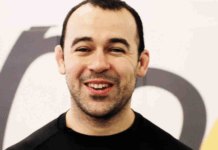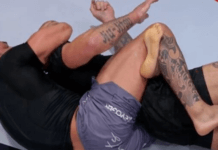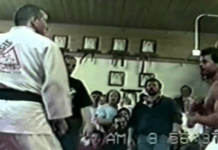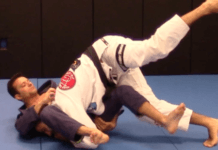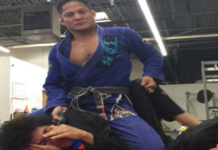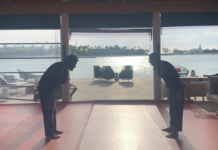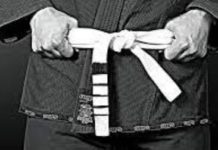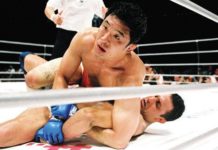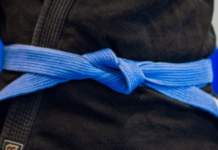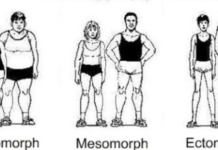When it comes to flexibility and all of the roles it has in training, it can be summarized in one sentence by John F. Kennedy; „The best road to progress is freedoms road.“ So, flexibility can be described as a freedom road which is a must-have if you want to progress in your training. It is a strength training starting point, especially today when most people are sitting behind the desk and their central neural system is marking their muscles length needs as very low. Even practitioners with decent training experience are skipping flexibility as something not important for their overall benefit. Why is that so and how to change that? Read more about BJJ flexibility Program
Freedom Ro(m)ad
The rough definition says that flexibility is freedom in range of motion in one, or more joints and souranding muscles (Holand,1968.). If you compare, not just this, but all of the available flexibility definitions out there, in the end, they will result in similar conclusions. The key question will always be an amplitude of motion you can get in your flexibility exercises. Through time, flexibility programs were constructed in a way that you would need a lot of time to implement all of the flexibility exercises in your routine. You were obligated to numerous static poses as a preparation for your routine, and as a cool-down toll after the routine have been done. As days were passing we made some researches and came to the conclusion that the static stretches, remember this, is not the only and the best way to secure a good amplitude of motion. Because of that, today, we differentiate static, active, pasive, balistic, PNF, dynamic….. flexibility and we are awarded with a bless of choice. What choice to made when it comes to BJJ flexibility program?
How to get Flexible for Bjj
First of all, it is important to say that all the stretching types I mentioned have its proper way and time for application. So, there is no best way to stretch. There is the best way to stretch taking your needs into account. In this article, I will talk about the flexibility in a proper warm-up and its role as a prevention tool. That will be my flexibility guideline today. When it comes to the factors that can limit your movement some of them we highlight are: elasticity of the muscle fibers, elasticity of ligaments and tendons, proprioceptors ( tiny sensors located inside of a muscle fiber) and the ability of a muscle to contract and relax so that it can achieve highest ROM (range of motion). Also, it is very important to adapt the flexibility routine to your specific individual needs. I would highly suggest you to visit some good movement scanning lab to pass a good movement screen test so that your tight and weak areas can be highlighted. I tell this because, not everything that you feel as tight, really is tight. On a contrary, it can be a weak link.
Taking all of this into account you can start creating your flexibility routine. Remember that flexibility exercises have to be in a serving of preparation for real conditions. If you imagine BJJ practice or BJJ competition, I am sure you have a lot of explosive and surprisingly movements on your mind. All those explosive and surprise moves demand constant change between relaxing and contracting different muscles in a very short period of time. Compare that to your static stretches where you stand or sit for a long time and hold you position x seconds? I hope you see the point here.
BJJ flexibility program
If you take the flexibility factors into account, I am sure the proprioceptors factors are a mystery to you. Those tiny can help you a lot. With them, you can „trick“ your muscles and have benefits in your movement amplitudes. The proprioceptors detect any changes in physical displacement (movement or position) and any changes in tension, or force, within the body. They are found in all nerve endings of the joints, muscles, and tendons. The proprioceptors related to stretching are located in the tendons and in the muscle fibers.
Here the PNF method jumps in. This is a stretching method that use the static contraction of a muscle to get a higher amplitude of motion. The contraction and relaxation are combined into one exercise where contraction of a muscle is done for 7-15 seconds, then 2-3 seconds of relaxation is coming up, and you finish with 10-15 seconds of stretching the muscle. That is the contract-relax PNF, you can look up for PNF contract-relax-contract version of a stretch.
Next thing you add to your BJJ flexibility program is dynamic flexibility. You stretch your muscles in a dynamic way. This can be intensified by adding more reps into sets or having more sets in total volume. You can progressively increase speed and range of movement. I sugest to start with 8-12 reps in a set.
In the end, it is possible to add ballistic stretching. I highly sugest to think about that. The reason there is a high injury risk. Here you use the momentum of the body to go beyond the normal range of motion.
Few thing to keep in mind
BJJ Flexibility training is something you want to add to your BJJ routine. Start slowly with flexibility exercises and in the range that you can handle. The key thing is the safe freedom progression. It will help you to get a larger range of motion during you trainings. Also, you will dramaticaly reduce the risk of injury during your BJJ training and BJJ competition. I am sure that injury is something you want to avoid. Go, and progress to freedom.
Check also:
- Rope Jumping for BJJ – Workout example
- Bodyweight Workout for BJJ Practicioners
- Back to basics – 5×5 Strength Protocol for BJJ & MMA

